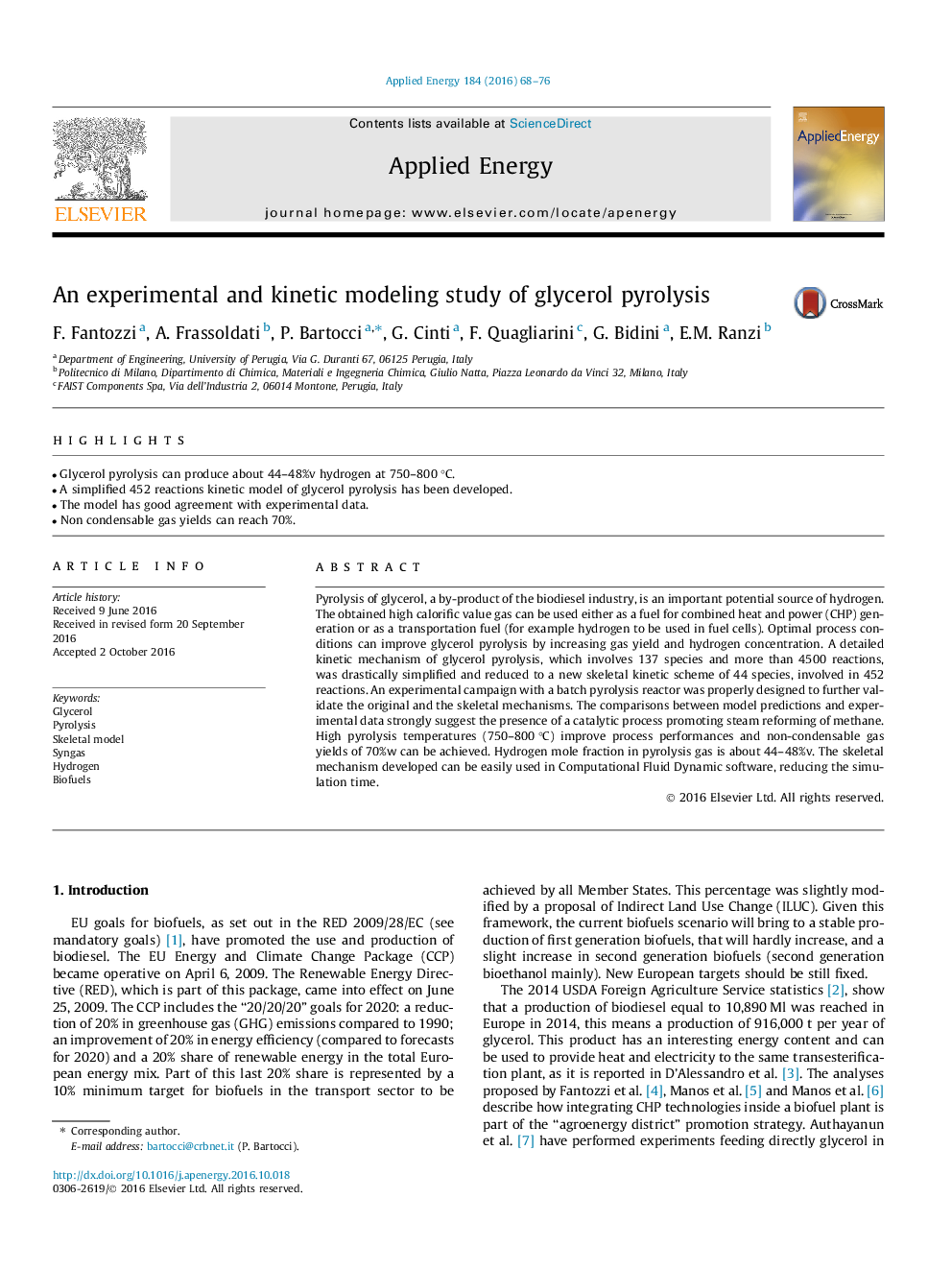| Article ID | Journal | Published Year | Pages | File Type |
|---|---|---|---|---|
| 4916853 | Applied Energy | 2016 | 9 Pages |
Abstract
Pyrolysis of glycerol, a by-product of the biodiesel industry, is an important potential source of hydrogen. The obtained high calorific value gas can be used either as a fuel for combined heat and power (CHP) generation or as a transportation fuel (for example hydrogen to be used in fuel cells). Optimal process conditions can improve glycerol pyrolysis by increasing gas yield and hydrogen concentration. A detailed kinetic mechanism of glycerol pyrolysis, which involves 137 species and more than 4500 reactions, was drastically simplified and reduced to a new skeletal kinetic scheme of 44 species, involved in 452 reactions. An experimental campaign with a batch pyrolysis reactor was properly designed to further validate the original and the skeletal mechanisms. The comparisons between model predictions and experimental data strongly suggest the presence of a catalytic process promoting steam reforming of methane. High pyrolysis temperatures (750-800 °C) improve process performances and non-condensable gas yields of 70%w can be achieved. Hydrogen mole fraction in pyrolysis gas is about 44-48%v. The skeletal mechanism developed can be easily used in Computational Fluid Dynamic software, reducing the simulation time.
Related Topics
Physical Sciences and Engineering
Energy
Energy Engineering and Power Technology
Authors
F. Fantozzi, A. Frassoldati, P. Bartocci, G. Cinti, F. Quagliarini, G. Bidini, E.M. Ranzi,
